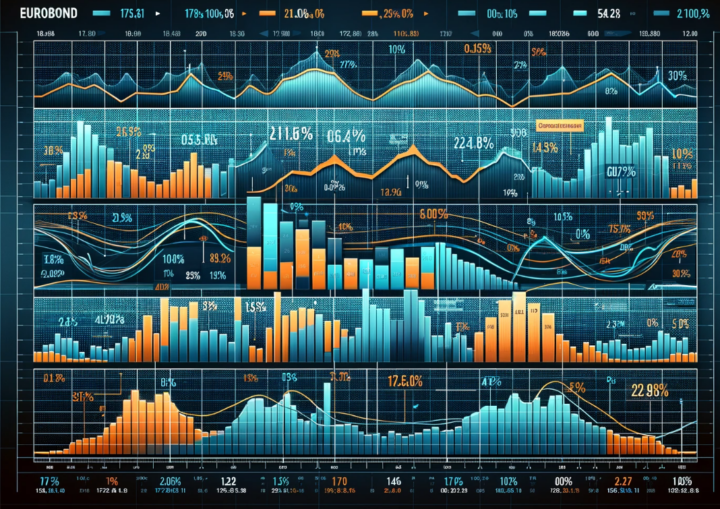After a prolonged bearish trend, Nigeria’s Eurobonds are signaling a potential turnaround, marked by consecutive days of declining rates and increasing prices—a clear indicator of growing investor confidence.
According to information provided by the Debt Management Organization on November 14, the NOV 2025 Eurobond saw a notable increase of 28.7 cents to a dollar. This positive trend continued with a further appreciation of 22.9 cents to a dollar on November 15. Over the span of November 13 to 15, the bond’s yield rate experienced a cumulative decline of 23.6 basis points, settling at 8.897% on November 15.
The NOV 2027 Eurobond witnessed an impressive appreciation of 113.5 cents to a dollar between November 13 and 15, coupled with a rate decrease of 37.7 basis points during the same period, closing at 8.897% on November 15. Similarly, the SEP 2028 Eurobond demonstrated an increase of 104.7 cents to a dollar within this timeframe, with its rate decreasing by 30.7 basis points to close at 10.526% on November 15.

The MAR 2029 Eurobond experienced a notable appreciation of 132.4 cents to a dollar between November 13 and 15, accompanied by a rate reduction of 36.3 basis points within the same period. The FEB 2030 Eurobond saw its price rise by 151 cents to a dollar, coupled with a rate decrease of 38 basis points. The JAN 2031 Eurobond’s price increased by $1.359 between November 13 and 15, with its rate falling by 30.4 basis points to close at 11.19%.
Further down the line, the FEB 2032 Eurobond exhibited an appreciation of 153 cents to a dollar, along with a rate decrease of 32.8 basis points during the mentioned period. The SEP 2033 Eurobond also recorded a price gain of $1.449 and a rate decline of 28.1 basis points within the same timeframe. For the FEB 2038 Eurobond, the price appreciated by 187.2 cents to a dollar, with its rate falling by 34 basis points to 11.461%.
Even longer-term bonds experienced positive movements, with the NOV 2047 Eurobond gaining $2.043 between November 13 and 15, and its rate falling by 33.8 basis points to close at 11.608% on November 15. The JAN 2049 Eurobond saw an increase of 228.3 cents to a dollar within the same period, accompanied by a rate decrease of 35.2 basis points to close at 12.034%. Additionally, the SEP 2051 Eurobonds gained 207.1 cents to a dollar, with rates falling by 33.8 basis points during the same timeframe.
In recent years, Nigeria faced unfavorable bond market conditions during the Buhari administration, leading to a decline in the country’s credit ratings—S&P downgraded it to B-, Moody’s to Caa1, and Fitch to B-. However, the Tinubu-led administration’s reforms have shown promise, with S&P upgrading Nigeria’s credit rating outlook from Negative to Positive in August.
While local-currency bonds have seen a more positive outlook, with longer-term Naira bonds garnering favor since the beginning of 2023, international fundraising through Eurobonds has proven challenging. Yields reaching up to 3% above the issued rates have made it more expensive for the Nigerian government to raise funds from the international bond market.
Despite these challenges, the marginal positive rally and ongoing reforms raise questions about the level of optimism investors will display in the coming months. Only time will tell how these economic dynamics will shape Nigeria’s bond market and investment landscape.
Support InfoStride News' Credible Journalism: Only credible journalism can guarantee a fair, accountable and transparent society, including democracy and government. It involves a lot of efforts and money. We need your support. Click here to Donate
